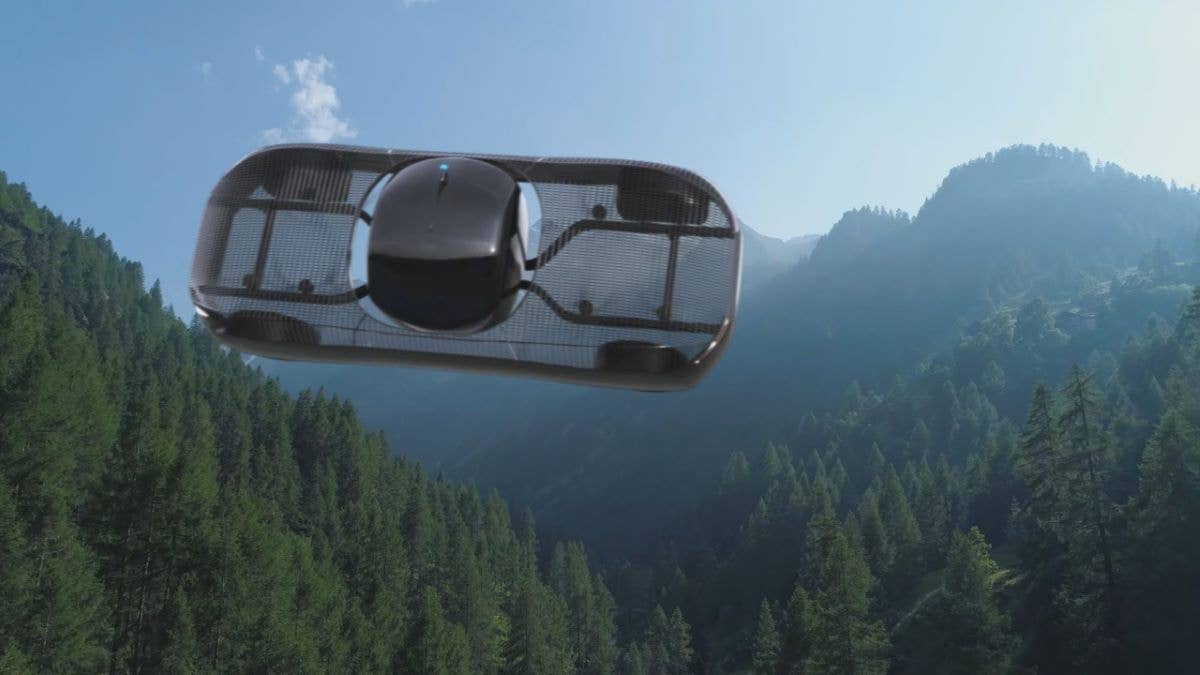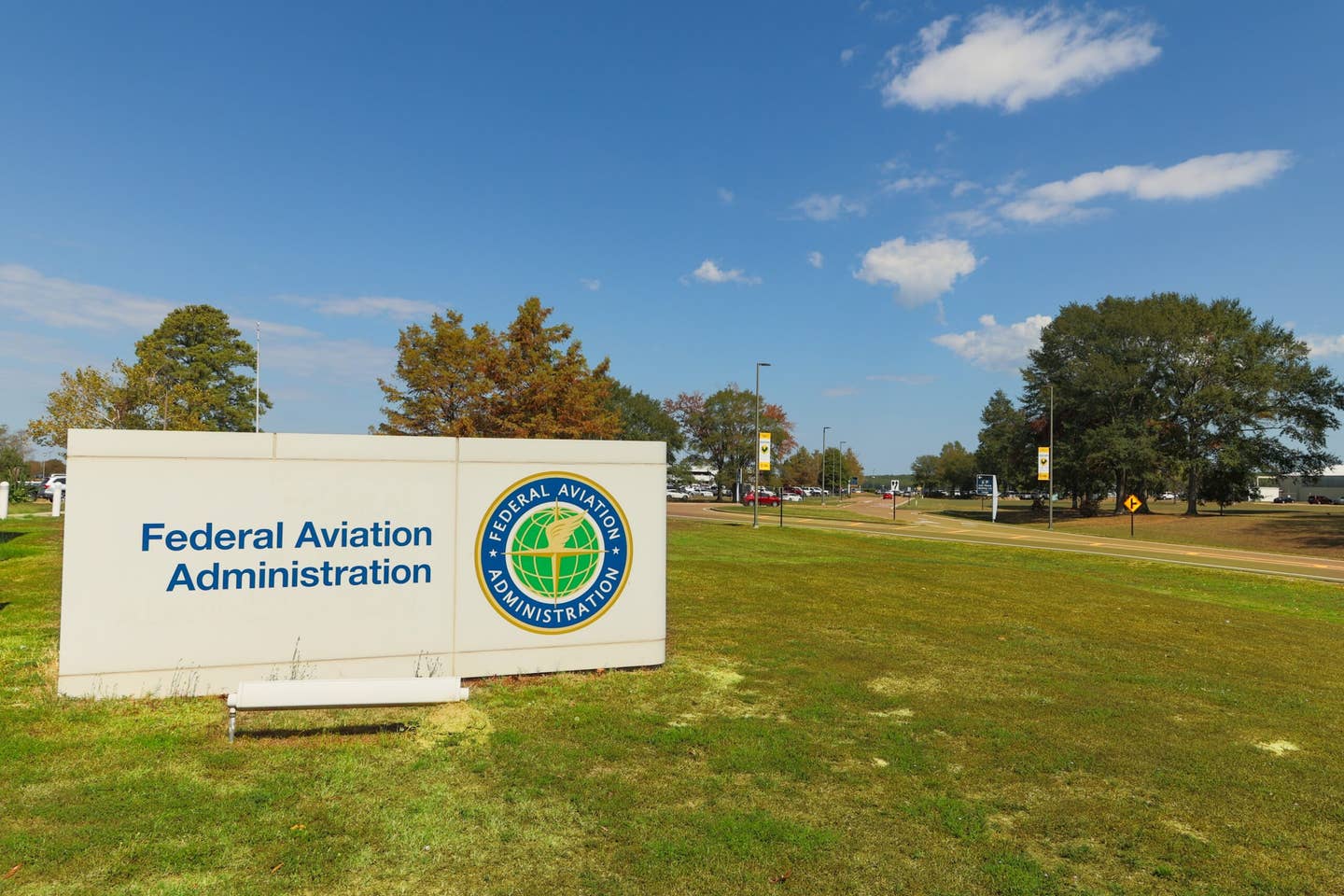A Flying Car Design Among Recently Published Patents
We break down the biggest drone, unmanned aircraft systems, and advanced air mobility-related patents from May 2023.

A patent filing for Alef Aeronautics’ Model A flying car peels back the curtain on its inner workings. [Courtesy: Alef Aeronautics]
Much of the action in the advanced air mobility space happens behind closed doors. Unless you’re friends with an Amazon Prime Air engineer or a U.S. military flight tester, the inner workings of modern flying innovation are opaque at best.
But every now and then, innovators give us a peek behind the curtain—if you know where to look.
Welcome to Patent Pending, FLYING’s monthly roundup of the biggest drone, unmanned aircraft systems (UASs), and advanced air mobility (AAM)-related patents. Each month, we’ll save you hours of parsing through U.S. Patent and Trademark Office filings by breaking down the most interesting, outlandish, and eye-popping technologies that have yet to hit the market.
A few notes: Just because a patent was published does not mean it has been granted, and there is no guarantee a company will develop patented technology. That being said, published patents can provide some insight into a firm’s research and innovation priorities—and a lot of them are just cool.
To View Patents
Here are a few published in May—to view these patents yourself, go to the U.S. Public Patent Search, enter the corresponding document ID in the search bar, and click “PN.”
Alef Aeronautics
You may not have heard of San Mateo, California-based Alef Aeronautics, but it’s a name you may see more of soon. Since 2015, the firm has been developing what it hopes will become the world’s first flying car—and a patent published this month gives us a peek behind the curtain.
Alef’s flying car, which is expected to be available for $300,000 by 2025 and has already received 440 preorders, is funny looking. But the design, if it proves capable, would be a marvel of modern engineering, allowing users to drive like a car and fly like a helicopter in the same trip.
The vehicle looks like the love child of a typical car and a cheese grater, with a vented body that houses eight propellers. At its center is a capsule where the pilot sits, and the “sides” of the vehicle are actually its wings.
When transitioning to vertical flight, the capsule is rotated so the pilot is facing the sky—and once the vehicle is off the ground, the whole thing rotates to align itself (and the pilot) in the direction of forward flight.
Document ID: US 20230159161 A1
Istanbul University
Cities are typically the enemy of drone delivery, with massive buildings, limited landing space, and millions of people who pose potential safety hazards. But a patent filed by Istanbul University offers a possible solution.
The patent, filed in 2021, proposes installing modular landing and docking platforms on structures such as apartment buildings. When not in use, these platforms could be enclosed in protective covering. But they would be capable of communicating with drones, opening up when one is approaching with a delivery.
A manual operator or autonomous software would be responsible for sending the drones to the proper platforms, where a docking system would ensure they stay in place while completing the delivery. The platforms could even be outfitted with QR codes, allowing the drone to “see” them and guide itself to its destination.
Document ID: US 20230159193 A1
NEC Corp.
Flying a drone is kind of like playing a video game—similar to an Xbox controller, drone remote controllers typically have an array of joysticks and buttons.
But soon it might be more like virtual reality. A 2021 patent filing from Japan’s NEC Corp. describes a remote control device that uses a camera to capture the operator’s hand gestures, conveying them into instructions for a drone.
NEC has its toes dipped in several different industries, but if it gets around to developing this design, it could be a game-changer for drone operators. Imagine pointing a finger to move your drone forward, using a “stop” gesture to make it hover in place, or waving to tell it to land.
Document ID: US 20230161339 A1
Rhombus Systems
The FAA is still developing a beyond visual line of sight (BVLOS) rule for unmanned aerial vehicles (UAVs), one that would allow remote pilots to fly drones where they can’t see them. But right now surveillance and detect-and-avoid technologies aren’t quite developed enough to enable safe BVLOS flights.
That’s where a company like Rhombus Systems can help. Per a 2022 patent filing, the firm has devised a solution that would use a network of antennae, such as cell towers, to create a low-altitude radar system for UAVs.
Rhombus essentially wants to fill in the gaps not covered by air traffic control, which cannot “see” at the elevation drones fly. The system would also track other objects in low-altitude airspace—such as birds or balloons—to give UAVs greater detection capabilities.
Primarily a home and business security firm, it wouldn’t be a stretch to see Rhombus pursue a drone radar and low-altitude airspace security system. And if it were to reach scale, it would surely be a boon for BVLOS operations.
Document ID: US 11656354 B2
And a Few More Patents
Believe it or not, AT&T operates a fleet of drones, and it may be planning to automate its network.
The telecommunications giant is trying to turn its COW (Cell on Wings) drones into mobile cell towers, with each aircraft transmitting 5G coverage over 10 square miles. And per a 2021 patent filing, it appears the company is building a system that would automatically route COW drones to areas that lack coverage.
The system would autonomously determine where the drones are needed, orchestrating their movement between storage or staging hubs and service areas. It would also tell each drone where and when it needs to charge.
Document ID: US 20230147814 A1
Toyota, meanwhile, filed a patent that calls for drones to provide a different kind of service: roadside assistance.
The company hasn’t made any public statements to suggest it’s currently operating drones. But its 2021 filing describes a network of UAVs that could issue warnings to drivers (i.e. icy roads or construction), deliver equipment to personnel, and perform other tasks.
These drones would be coordinated by a real-time traffic detection system, taking in road congestion data and mapping it to identify places where an accident might occur. The system would then direct drones to busy intersections or congested highways, putting them in position to provide service if needed.
Document ID: US 20230135603 A1
Drones are getting most of the attention in the modern flying space these days, but advanced air mobility technology is also on the rise. The problem? The vast majority of pilots haven’t been trained to operate aircraft such as electric vertical takeoff and landing (eVTOL) air taxis.
But Beta Air, one of the leaders in the young space, may have a way to make life easy on prospective eVTOL pilots. The firm in December filed a patent for a hover-and-thrust control assembly, which would essentially turn the pilot’s arm into a flight controller.
The mechanism looks like an extra long stick shift—moving the stick up would increase vertical thrust, while moving it down would decrease it. At the end of the stick, the pilot would use a thumbwheel to increase or decrease forward thrust, enabling propulsion in four directions through a single control system.
Document ID: US 20230159160 A1
Meanwhile, a patent filed by Kia, which is decidedly not an eVTOL manufacturer, could give Beta Air and other air taxi firms a lift.
The filing calls for a charging system that would stay attached to the aircraft during takeoff, giving it some extra juice during the most energy-consuming stage of flight. To pull it off, the system would deploy a smaller drone that ascends with the air taxi, keeping the aircraft attached to a power source as it climbs. The smaller UAV would then release and fly back to the ground.
Document ID: US 20230135344 A1
The system, if it comes to fruition, could be the key to enabling longer flight times for air taxis. Keep in mind, though, that Kia’s invention and those described above may be several years away from development—and they may never be developed at all.
See anything I missed this month? Reach out to jack@flying.media or @jack_daleo on Twitter.

Sign-up for newsletters & special offers!
Get the latest FLYING stories & special offers delivered directly to your inbox






